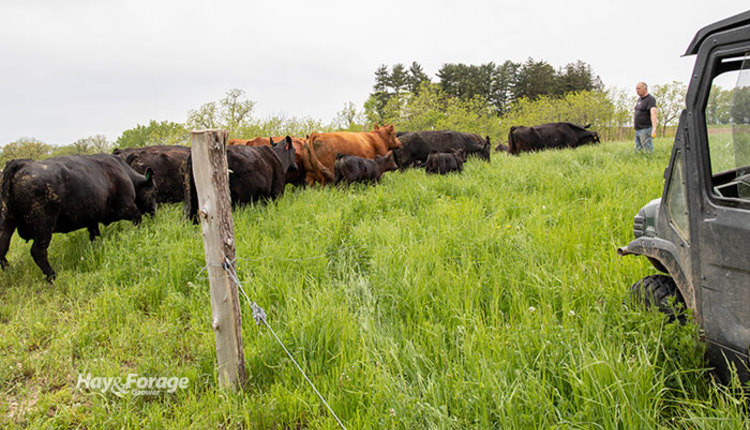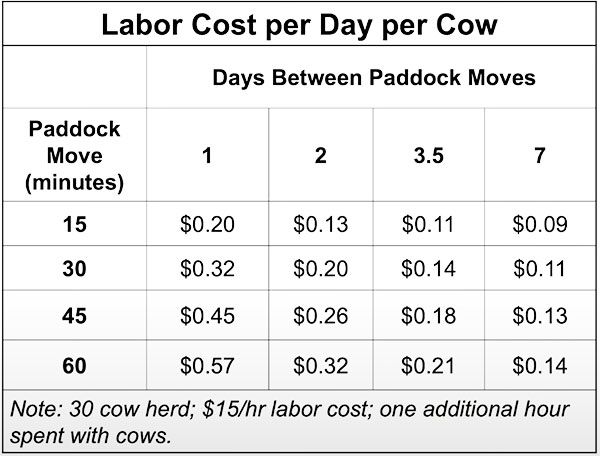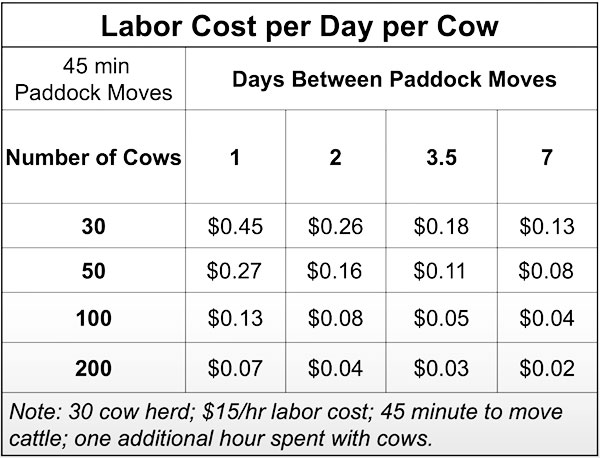
A myth can be defined in several ways, but it is often thought to be something that has been repeatedly stated over a period of years such that it becomes accepted truth when, in fact, it isn’t. Often, a myth is only partially true.
At last month’s Kentucky Grazing School, a quartet of grazing myths were addressed by Greg Halich, an extension agricultural economist with the University of Kentucky.
One of those myths was that cattle need to be moved every day through a pasture rotation.
“It’s not that you can’t or shouldn’t move your cattle every day because, for some farms, that makes a lot of sense,” Halich said. “However, for many smaller beef operations, it probably doesn’t make sense from a labor perspective.”
The economist pointed to some older research done at Virginia Tech University that showed the largest boost in grazing efficiency occurred when the experimental pasture was broken into three paddocks. This was sufficient to give each paddock a resting period, although additional but smaller improvements in grazing efficiency were realized with more paddocks and shorter durations in each one.
Halich said that more frequent moves require additional infrastructure and labor costs. Looking only at labor, he developed a sensitivity chart that showed the cost per day per cow for moving a 30-cow herd at one- to seven-day intervals (see Figure 1). The table also allows the user to select how much time an average move might take.
Figure 1.

If the cows get moved once per week and it takes 45 minutes to complete the move, Halich noted that it will cost about 13 cents per cow per day if labor is charged at $15 per hour. That cost would double if cows were moved every two days. Halich suggested that a reasonable compromise for this 30-cow herd might be a twice per week schedule. “More than that, and you probably have more labor into the system than you really want, unless your moves take less than 45 minutes,” he said.
If the grazing season can be extended into fall and winter, Halich indicated that a more frequent move — for example, every two days — is justified because hay doesn’t have to be fed.
A larger herd
“As the herd size grows, the economics of cow moves changes,” Halich said. In a second analysis, he assumed a move would take 45 minutes and then changed herd size (see Figure 2).
Figure 2.

The cost to move cows more frequently declines significantly as herd size grows. In Figure 2, the cost for a 200-cow herd to move cattle every day is only 7 cents per cow per day. “They probably should be moving cattle to new grass every day,” Halich said.
Of course, there are always caveats and other considerations than just labor. “If your alternative to moving cattle is sitting on the couch, drinking soda, and eating potato chips, then go move the cattle,” Halich quipped. “There’s value to getting exercise and having improved mental health.”
Especially for beginning graziers, there’s also an education and learning component to moving cattle more frequently. This has economic value, too.
More frequent moves might also be justified if there is the ability to reduce the amount of time and labor needed. Halich offered the example of a batt latch, which automatically opens the fence at a certain time to allow cattle into a new paddock.
Finally and perhaps harder to measure in economic terms, more frequent movement often leads to a calmer, more docile cattle herd.

